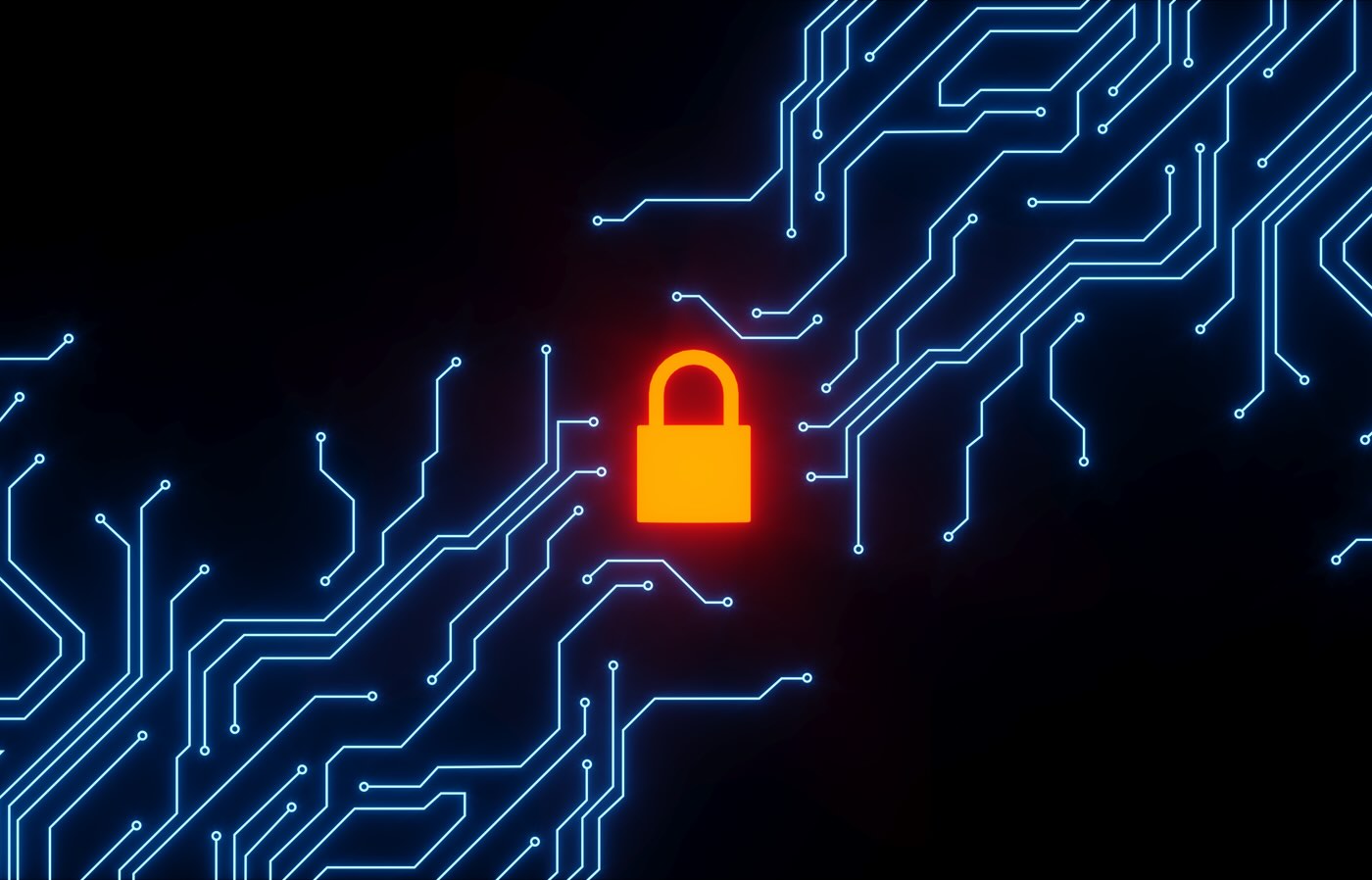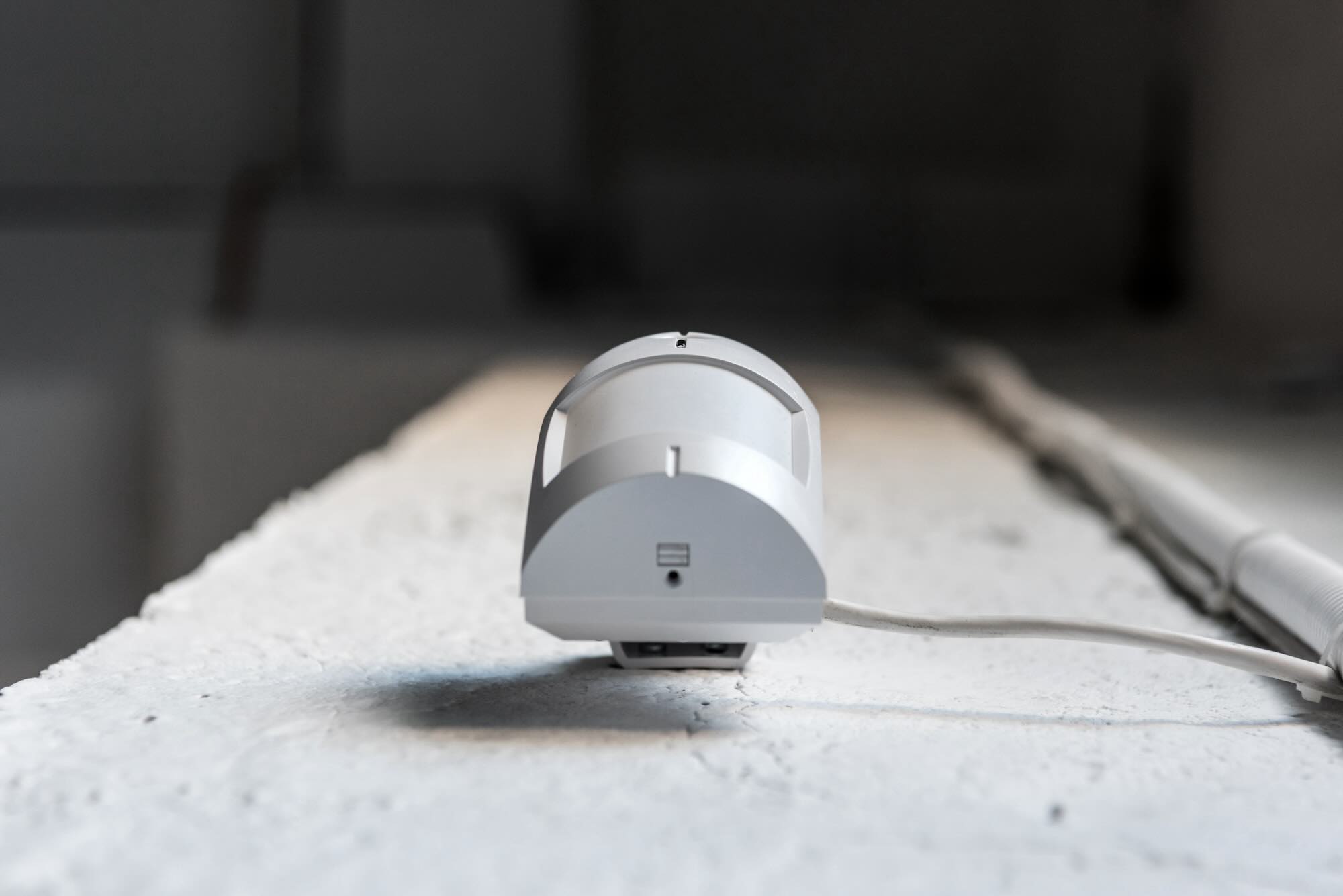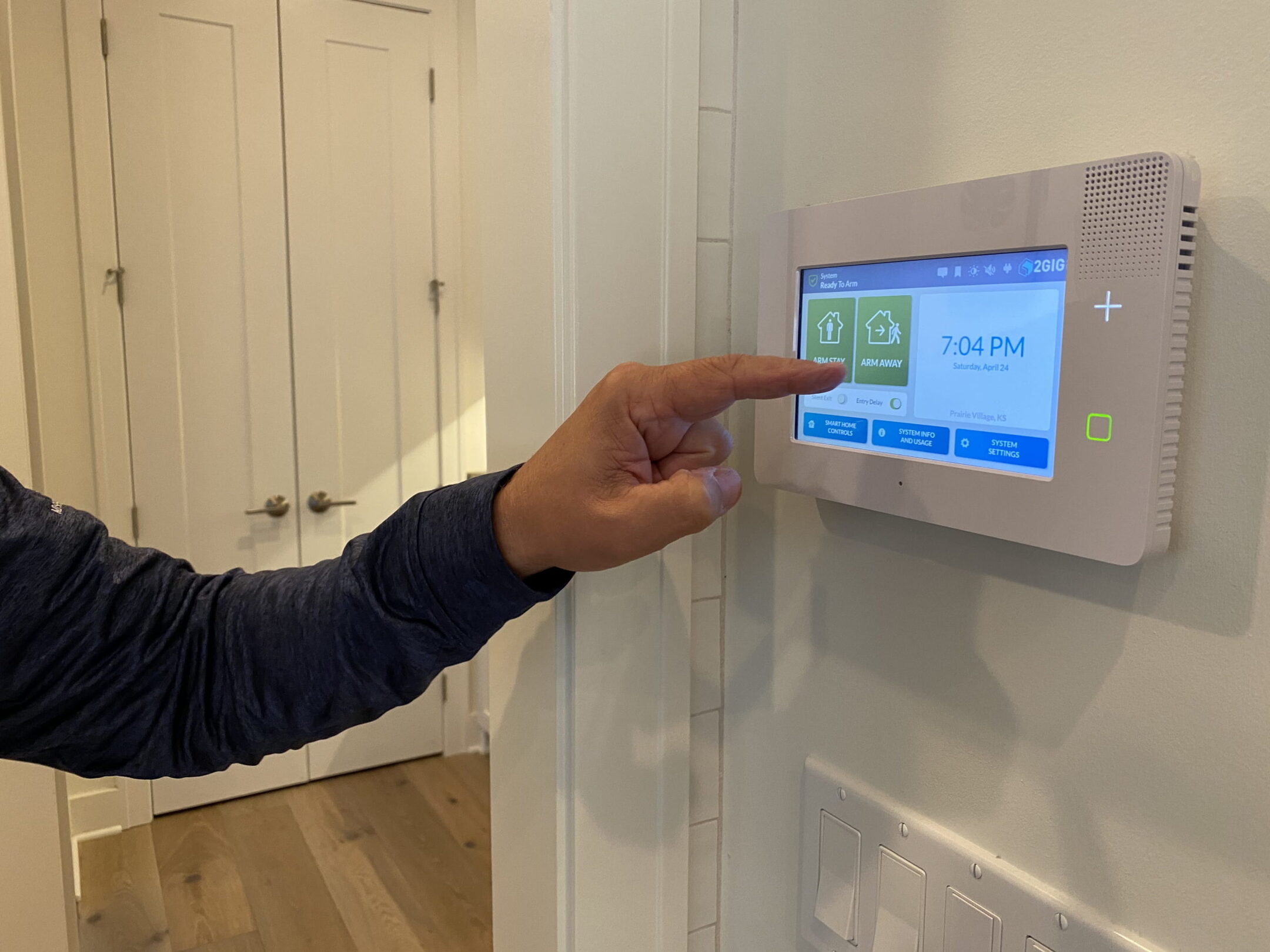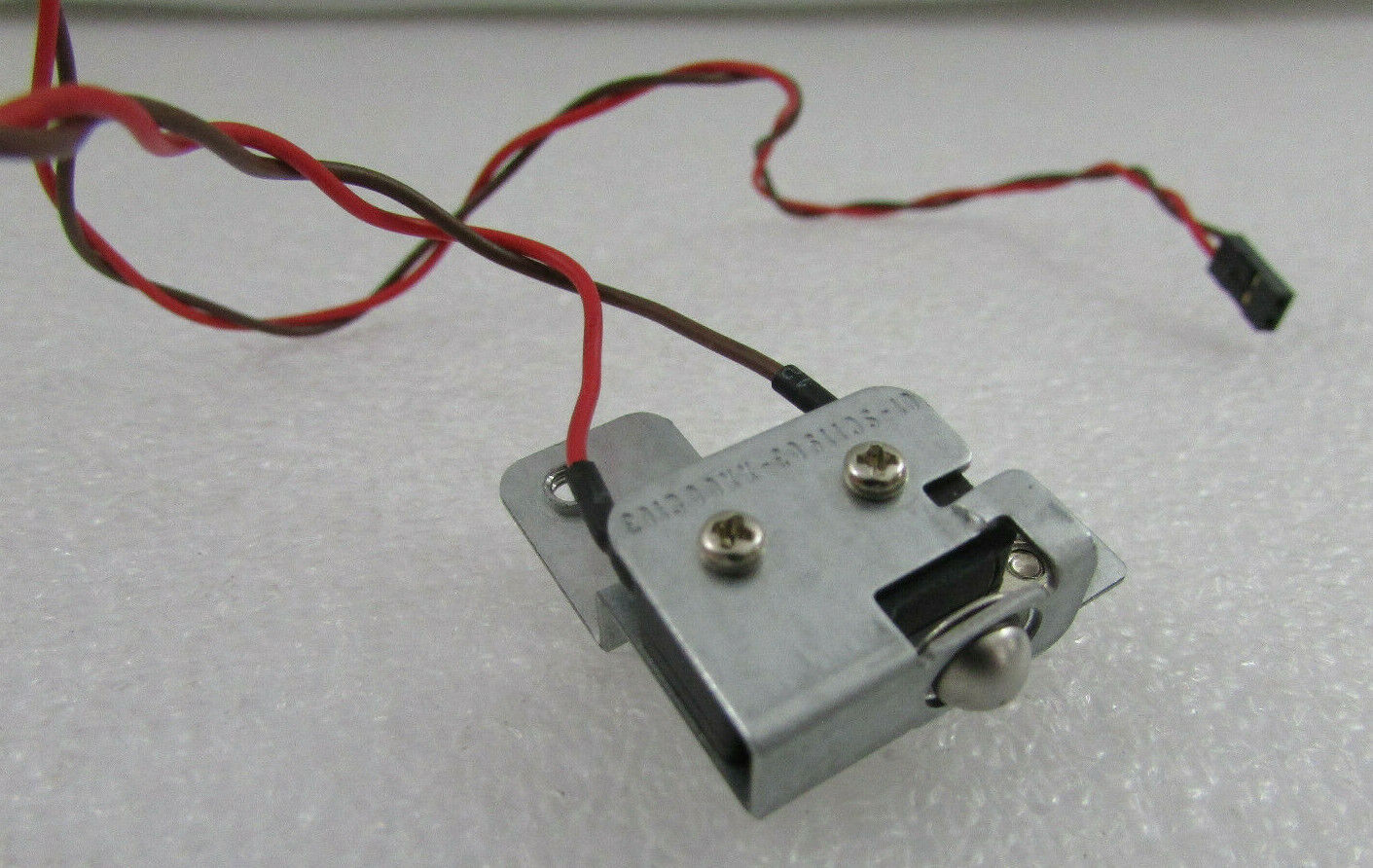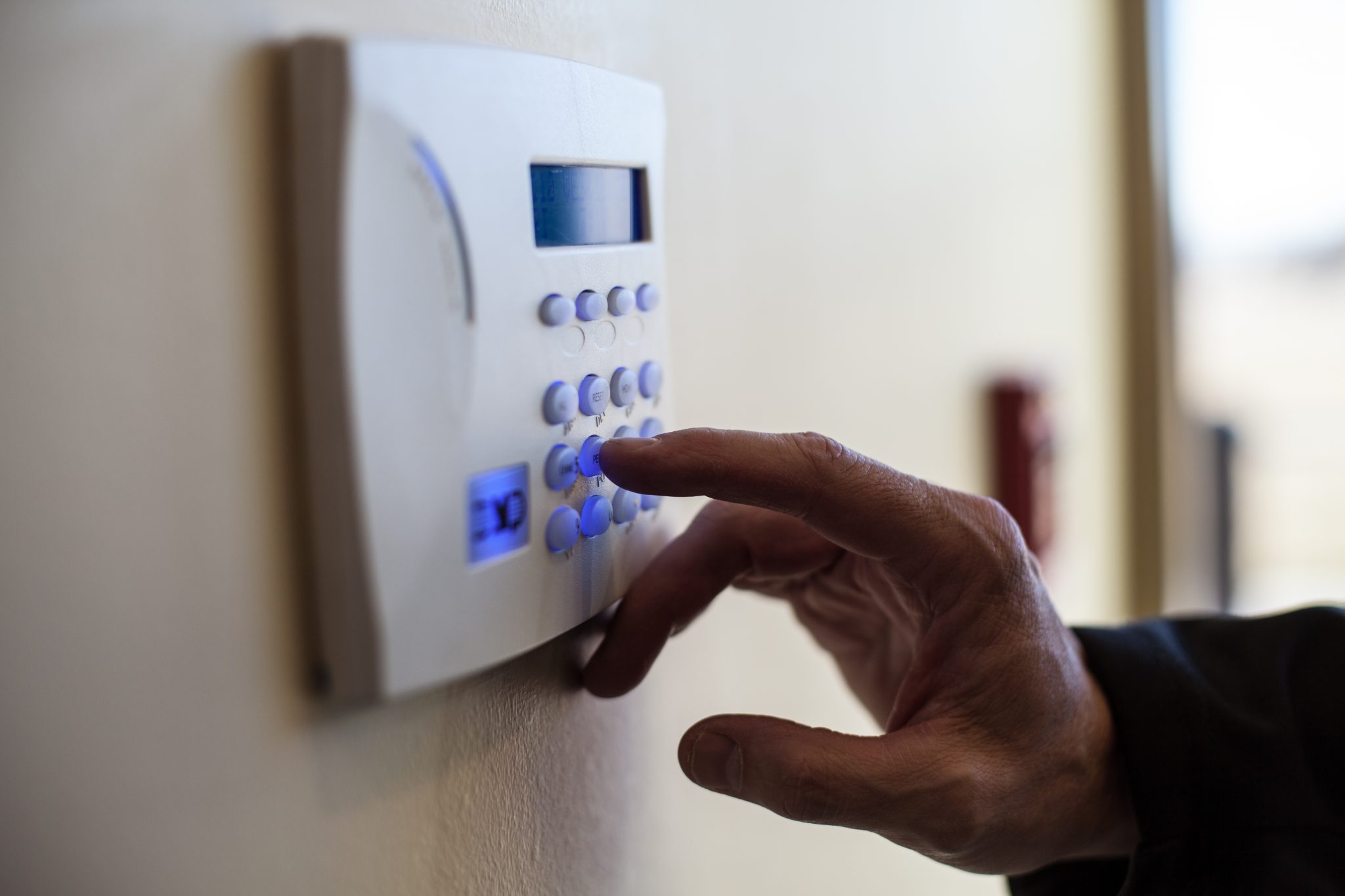Home>Home Security and Surveillance>How To Program 2 Gig Intrusion Detection
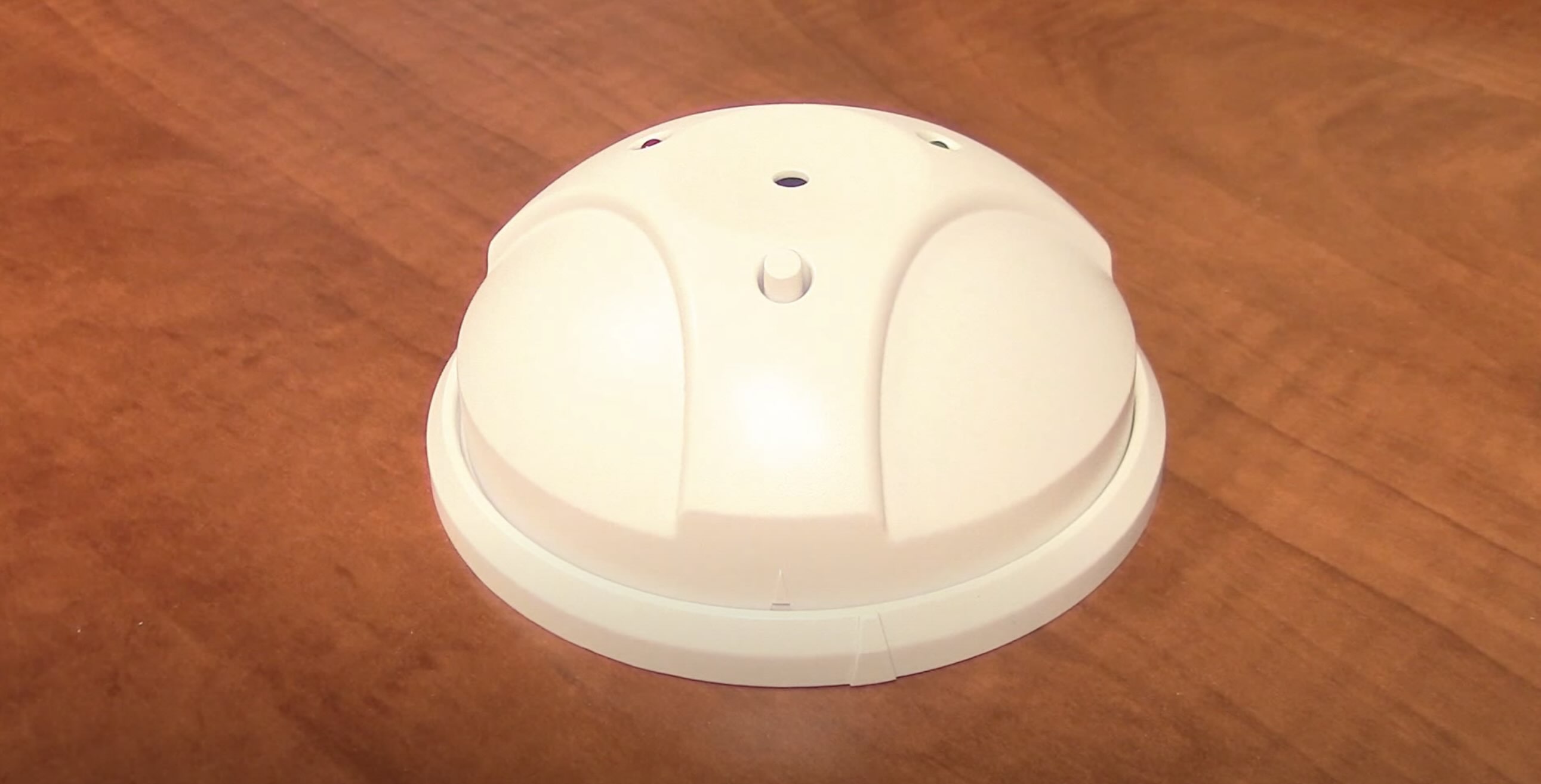

Home Security and Surveillance
How To Program 2 Gig Intrusion Detection
Modified: March 6, 2024
Learn how to program 2 Gig Intrusion Detection for enhanced home security and surveillance. Step-by-step instructions and expert tips for optimum protection.
(Many of the links in this article redirect to a specific reviewed product. Your purchase of these products through affiliate links helps to generate commission for Storables.com, at no extra cost. Learn more)
Introduction
Home security is a top priority for many homeowners, and with the advancements in technology, it has become easier than ever to protect our homes and loved ones. One of the most effective ways to ensure the safety of your property is by installing an intrusion detection system. These systems provide round-the-clock surveillance and alert you to any unauthorized entry or suspicious activity.
In this article, we will focus specifically on the 2 Gig Intrusion Detection System, a popular choice that offers advanced features and reliable performance. Whether you are a homeowner looking to install a new system or a security professional seeking guidance on programming and optimizing the 2 Gig system, you have come to the right place.
By the end of this article, you will have a comprehensive understanding of the key features of the 2 Gig Intrusion Detection System, how to program it effectively, and best practices to ensure its smooth operation. So, let’s dive in and explore the world of home security and surveillance with the 2 Gig Intrusion Detection System.
Key Takeaways:
- The 2 Gig Intrusion Detection System offers advanced features like wireless connectivity and mobile app access, making it easy for homeowners to monitor and control their home security from anywhere.
- By integrating the 2 Gig system with other security devices and following best practices for programming and maintenance, homeowners can create a reliable and comprehensive security solution for their property.
Read more: What Is Wireless Intrusion Detection
Understanding Intrusion Detection Systems
Before we delve into the specifics of the 2 Gig Intrusion Detection System, it’s essential to understand the basics of intrusion detection systems (IDS). An IDS is a security technology designed to detect unauthorized access or intrusion attempts into a protected environment.
There are two primary types of IDS: network-based intrusion detection systems (NIDS) and host-based intrusion detection systems (HIDS). NIDS monitor network traffic and analyze packets for any suspicious activity, while HIDS focus on monitoring the activities on individual devices or hosts.
The main purpose of an intrusion detection system is to identify and alert users to any potential threats or attacks, allowing them to take prompt action to mitigate the risk. This could include notifying security personnel, triggering alarms, or even initiating automatic countermeasures to block or isolate the intruder.
Now that we have a general understanding of intrusion detection systems, let’s explore the key features that make the 2 Gig Intrusion Detection System stand out from the crowd.
Key Features of a 2 Gig Intrusion Detection System
The 2 Gig Intrusion Detection System is renowned for its advanced features that contribute to its effectiveness and reliability. Let’s take a closer look at some of its key features:
- Wireless Connectivity: The 2 Gig system utilizes wireless technology, allowing for flexible placement of sensors and ease of installation. This eliminates the need for extensive wiring, making it a convenient option for both new and existing homes.
- Z-Wave Integration: Z-Wave technology enables seamless integration with other smart home devices, such as door locks, lighting systems, and thermostats. This creates a comprehensive and interconnected home automation system that enhances convenience and security.
- User-Friendly Interface: The 2 Gig system features an intuitive and user-friendly interface, making it easy for homeowners to navigate and control the system. From arming and disarming the system to checking the status of sensors, the interface provides a seamless and straightforward experience.
- Mobile App Access: With the accompanying mobile app, homeowners can monitor and control their 2 Gig system from anywhere, anytime. This adds an additional layer of convenience and peace of mind, as users can receive push notifications and stay connected to their home’s security status.
- Zones and Sensors: The 2 Gig system supports a wide array of zones and sensors, allowing for comprehensive coverage of your property. Whether it’s door/window sensors, motion detectors, glass break sensors, or smoke detectors, the system can be customized to suit your specific security needs.
- Advanced Alarm System: The 2 Gig Intrusion Detection System is equipped with a robust alarm system that can be set up to trigger loud sirens, flash lights, and even send alerts to a monitoring center or security personnel in case of a breach.
These are just a few of the standout features that make the 2 Gig Intrusion Detection System an excellent choice for home security. Now that we understand the key features, it’s time to dive into the programming process to ensure that the system is set up effectively.
Programming the 2 Gig Intrusion Detection System
Programming the 2 Gig Intrusion Detection System is a crucial step in ensuring its optimal performance and customizing it to meet your specific security needs. Let’s walk through the process of programming the system:
- Accessing the Control Panel: Start by accessing the control panel of the 2 Gig system. This can usually be done by entering a designated code or using a keycard.
- Setting up User Codes: Create user codes that will be used to arm and disarm the system. It’s recommended to assign unique codes to each user to maintain accountability.
- Configuring Communication Settings: Ensure that the communication settings of the 2 Gig system are properly configured. This includes setting up Wi-Fi connectivity or connecting to a cellular network for remote monitoring and alerts.
- Customizing Sensor Settings: Set up the sensor settings according to your preferences. This involves specifying how each sensor should be triggered, such as when a door or window is opened, or when motion is detected. Fine-tune the sensitivity settings to minimize false alarms.
- Creating Zones: Divide your property into zones and assign sensors to each zone. This allows for more granular control and monitoring of specific areas of your home.
- Configuring Arm/Disarm Options: Determine the arm and disarm options that suit your lifestyle. This can include configuring different arming modes, such as “Away” mode when no one is home, or “Stay” mode when you’re inside but want certain areas protected.
- Setting up Alarm Triggers and Actions: Configure the system to initiate specific actions when an alarm is triggered. This can include sounding the alarm, activating lights, sending notifications to your mobile devices, or even triggering a response from a monitoring center.
- Testing the System: It’s crucial to thoroughly test the 2 Gig Intrusion Detection System after programming to ensure that all sensors are properly connected and functioning. Test each sensor individually and perform a full system test to validate its performance.
- Regular Maintenance: Schedule regular maintenance checks to ensure that the system remains in optimal condition. Replace batteries in sensors when needed and update the software periodically to benefit from the latest features and security enhancements.
By following these steps, you can program the 2 Gig Intrusion Detection System to effectively secure your home and provide you with peace of mind. However, it’s important to keep in mind that integration with other security systems can further enhance the overall security of your property. Let’s explore this integration in the next section.
Setting up Zones and Sensors
Setting up zones and sensors is a crucial aspect of configuring the 2 Gig Intrusion Detection System to ensure comprehensive coverage and accurate monitoring of your property. Let’s dive into the process of setting up zones and sensors:
- Identify Areas to be Monitored: Begin by identifying the different areas of your home that you want to monitor. This could include entry points such as doors and windows, as well as specific rooms or zones within your property.
- Assign Sensors to Each Zone: Next, determine which sensors are best suited for each zone. For example, door/window sensors are commonly used for entry points, while motion detectors can be placed in high-traffic areas or rooms that require extra security.
- Place Sensors Strategically: Proper sensor placement is crucial for optimal performance. Ensure that sensors are strategically placed to cover the desired areas effectively. Follow manufacturer guidelines for recommended heights, angles, and distances.
- Consider Sensor Types: The 2 Gig system supports a variety of sensor types, including door/window sensors, motion detectors, glass break sensors, and smoke detectors. Choose sensors that align with your security needs and budget.
- Configure Sensor Settings: Once sensors are installed, configure their settings within the 2 Gig system. This involves specifying how each sensor should be triggered and adjusting sensitivity levels to minimize false alarms.
- Test Sensor Functionality: After setting up each sensor, perform a thorough test to ensure they are functioning correctly. Open doors and windows to trigger door/window sensors and move around the monitored areas to trigger motion detectors.
- Ensure Sensor Connectivity: Verify that the sensors are properly connected to the 2 Gig control panel and are communicating effectively. Check signal strength and range to ensure reliable communication between the sensors and the control panel.
- Label Zones: It’s helpful to label each zone on the control panel for easy identification. Use descriptive labels that correspond to the area being monitored, making it easier to identify and troubleshoot any issues.
By following these steps, you can successfully set up zones and sensors with the 2 Gig Intrusion Detection System. This will provide you with a comprehensive and reliable security solution that safeguards your home and loved ones from unauthorized entry and suspicious activity.
When programming a 2 Gig Intrusion Detection system, make sure to carefully define the parameters for what constitutes an intrusion. This will help the system accurately detect and respond to potential threats.
Configuring Alarm Triggers and Actions
Configuring alarm triggers and actions is an essential step in maximizing the effectiveness of your 2 Gig Intrusion Detection System. By customizing these settings, you can ensure that appropriate actions are taken when an alarm is triggered. Let’s explore the process of configuring alarm triggers and actions:
- Determine Alarm Triggers: Start by identifying the events that should trigger an alarm. This could include a door or window being opened, motion being detected in specific areas, or the activation of a glass break sensor.
- Specify Alarm Actions: Once the alarm is triggered, determine the actions that you want the system to take. This can include sounding an audible alarm, activating strobe lights, or sending notifications to your mobile devices.
- Integrate with Monitoring Center: If you have a monitoring service, you can configure the system to send alarm notifications to the monitoring center. This allows security professionals to take immediate action and dispatch assistance if needed.
- Set up Remote Notifications: Configure the system to send notifications to your mobile devices when an alarm is triggered. This ensures that you are promptly informed of any suspicious activity, even when you are away from home.
- Configure Alarm Delays: Determine if you want to include any delays before the alarm is triggered. This can provide a grace period to disarm the system when entering or exiting your home without triggering a false alarm.
- Customize Arming Modes: Depending on your lifestyle and security needs, configure different arming modes. This can include “Away” mode when no one is home, “Stay” mode when you are inside but want certain areas protected, or “Night” mode for added security while you sleep.
- Test Alarm Triggers and Actions: After configuring the settings, thoroughly test the alarm triggers and actions to ensure they work as intended. Open doors and windows, trigger motion detectors, and simulate break-ins to validate the system’s response.
- Adjust Sensitivity Levels: Fine-tune the sensitivity levels of the sensors to minimize false alarms. This ensures that the system accurately detects and responds to genuine threats while avoiding unnecessary disruptions.
By configuring alarm triggers and actions in your 2 Gig Intrusion Detection System, you are taking proactive measures to protect your home and respond swiftly to potential security breaches. With the right settings in place, you can enjoy peace of mind knowing that your property is well-guarded and any alarm activations are addressed promptly.
Integrating the Intrusion Detection System with Other Security Systems
Integrating your 2 Gig Intrusion Detection System with other security systems can enhance the overall effectiveness and functionality of your home security setup. Let’s explore how you can seamlessly integrate your intrusion detection system with other security systems:
- Smart Home Integration: The 2 Gig system supports Z-Wave technology, allowing it to integrate with other smart home devices. This means you can connect your intrusion detection system with devices such as smart locks, security cameras, and lighting systems for a more comprehensive security solution.
- Camera Integration: By integrating your intrusion detection system with security cameras, you can enhance surveillance capabilities. When an alarm is triggered, the connected cameras can automatically start recording and provide real-time video feed to help verify and assess the situation.
- Monitoring Service Integration: If you have a professional monitoring service, you can integrate your intrusion detection system with their monitoring center. This provides an additional layer of security, as the monitoring center will receive alarm notifications and can initiate immediate action or contact the authorities if necessary.
- Home Automation Integration: Integration with a home automation system allows for seamless control and automation of security features. For example, you can program the lights to turn on when an alarm is triggered, or automate the locking of doors and arming of the system when you leave your home.
- Voice Assistant Integration: Many intrusion detection systems, including the 2 Gig system, support integration with popular voice assistants like Amazon Alexa or Google Assistant. This integration allows you to control and monitor your security system using voice commands, adding an extra layer of convenience.
- Mobile App Integration: If you have other security systems that come with their own mobile apps, look for compatibility with the 2 Gig system. This allows you to access and control all your security systems from a single mobile app for a more streamlined and convenient experience.
- Centralized Control: Through integration, you can achieve a centralized control hub for all your security systems. This means you can manage and monitor everything from one interface, simplifying the management of your home security.
Integrating your 2 Gig Intrusion Detection System with other security systems provides a cohesive and comprehensive approach to home security. It enables different components to work together seamlessly, maximizing the strength of each system and enhancing the overall protection of your property.
Testing and Troubleshooting the 2 Gig Intrusion Detection System
Testing and troubleshooting are essential steps in ensuring that your 2 Gig Intrusion Detection System is functioning optimally and providing reliable security for your home. Let’s explore how you can effectively test and troubleshoot your system:
- Test Sensor Functionality: Begin by testing each sensor individually to ensure it is working properly. Open doors and windows to trigger door/window sensors, move around the monitored areas to activate motion detectors, and test other sensors according to their specific functionalities.
- Check Sensor Connectivity: Verify that all sensors are properly connected to the 2 Gig control panel and communicating effectively. Ensure that the control panel is receiving signals from each sensor, and address any connectivity issues if detected.
- Perform a Full System Test: Conduct a comprehensive system test by arming and triggering the alarm in various scenarios. This will help you assess the responsiveness of the system and ensure that all components are working harmoniously.
- Review System Logs: Take advantage of the system logs and event history to identify any irregularities or potential issues. Analyze the logs to pinpoint any false alarms, inconsistent sensor readings, or connectivity problems that may require troubleshooting.
- Adjust Sensor Settings: Fine-tune the settings of individual sensors, such as sensitivity levels, detection ranges, and response times, to minimize false alarms and ensure accurate detection of potential threats.
- Check Power and Battery Levels: Regularly monitor the power and battery levels of the control panel and sensors. Replace batteries when needed and ensure that all power sources are stable and reliable.
- Update Firmware and Software: Keep your 2 Gig system up to date by checking for firmware and software updates regularly. This ensures that you benefit from the latest features, bug fixes, and security enhancements provided by the manufacturer.
- Research Known Issues or FAQs: Consult the manufacturer’s documentation, website, or online forums to find information on any known issues or frequently asked questions related to the 2 Gig Intrusion Detection System. This can provide valuable insights and solutions to common problems.
- Contact Technical Support: If you encounter persistent issues or challenges during testing and troubleshooting, don’t hesitate to reach out to the technical support team of 2 Gig or the dealer from whom you purchased the system. They can provide expert assistance and guidance in resolving complex problems.
By following these testing and troubleshooting steps, you can ensure that your 2 Gig Intrusion Detection System operates reliably and provides the security you need for your home. Identifying and addressing any issues promptly will help maintain the system’s effectiveness and give you peace of mind knowing that your property is protected.
Best Practices for Programming the 2 Gig Intrusion Detection System
Programming the 2 Gig Intrusion Detection System requires careful consideration and attention to detail to ensure optimal performance and functionality. Here are some best practices to follow when programming your system:
- Plan Ahead: Before you start programming, take the time to plan and strategize. Consider your specific security needs and determine the zones, sensors, and actions that will best serve your property.
- Follow Manufacturer Guidelines: Familiarize yourself with the manufacturer’s guidelines, recommendations, and documentation provided for programming the 2 Gig system. This will help you understand the system’s capabilities and ensure you program it correctly.
- Consider User Accessibility: Keep in mind the ease of use and accessibility for different users, such as family members or trusted individuals who may need access to the system. Assign user codes accordingly and create custom access levels if needed.
- Regularly Review and Update Settings: It’s important to periodically review and update the system settings to reflect any changes in your security requirements or lifestyle. This could include adding or removing sensors, adjusting arming modes, or updating user codes.
- Test, Test, Test: Thoroughly test the system after programming to ensure everything is functioning as intended. Test sensors, alarm triggers, and actions in various scenarios to confirm reliability and responsiveness.
- Maintain Documentation: Keep detailed documentation of the system’s programming settings and configurations. This will serve as a reference for future maintenance, troubleshooting, or when making system modifications.
- Ensure Regular System Maintenance: Schedule regular maintenance checks to ensure the system remains in optimal condition. This includes battery replacements, cleaning sensors, updating firmware, and testing for vulnerabilities.
- Train Users: Provide proper training to all users of the system so they understand how to use it effectively. Teach them how to arm and disarm the system, interpret system status indicators, and respond to alarms or notifications.
- Seek Professional Assistance if Needed: If you are unsure or encounter challenges during programming, consider seeking assistance from a professional security installer or the technical support team of 2 Gig. They can provide guidance and ensure the system is programmed correctly.
By implementing these best practices, you can ensure that your 2 Gig Intrusion Detection System is programmed effectively and tailored to your specific security needs. This will provide you with a reliable and robust home security solution that offers peace of mind and protection for your property.
Conclusion
The 2 Gig Intrusion Detection System offers advanced features and reliable performance to enhance the security of your home. By understanding the basics of intrusion detection systems and familiarizing yourself with the key features of the 2 Gig system, you can make an informed decision about implementing this system for your home security needs.
Programming the 2 Gig Intrusion Detection System is a critical step in customizing it to suit your specific requirements. By setting up zones and sensors strategically, configuring alarm triggers and actions, and integrating the system with other security systems, you can create a comprehensive and effective security solution.
Testing and troubleshooting the system regularly ensures its optimal performance. By conducting sensor tests, checking connectivity, and staying updated with firmware/software upgrades, you can address any issues or vulnerabilities promptly.
Following best practices such as planning ahead, reviewing and updating settings, and training users will contribute to the long-term success of your system. Consulting the manufacturer’s guidelines and seeking professional assistance when needed can also provide valuable insight and support.
In conclusion, the 2 Gig Intrusion Detection System offers a versatile and robust solution for home security and surveillance. By understanding its features, programming it effectively, and maintaining it with regular testing and updates, you can enjoy enhanced peace of mind, knowing that your home and loved ones are protected.
Frequently Asked Questions about How To Program 2 Gig Intrusion Detection
Was this page helpful?
At Storables.com, we guarantee accurate and reliable information. Our content, validated by Expert Board Contributors, is crafted following stringent Editorial Policies. We're committed to providing you with well-researched, expert-backed insights for all your informational needs.
